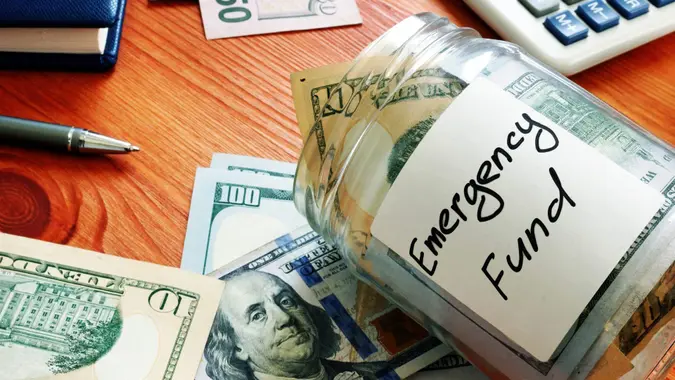Saving for a Home? Here Are 3 Best Accounts To Keep Down Payment Safe

Commitment to Our Readers
GOBankingRates' editorial team is committed to bringing you unbiased reviews and information. We use data-driven methodologies to evaluate financial products and services - our reviews and ratings are not influenced by advertisers. You can read more about our editorial guidelines and our products and services review methodology.

20 Years
Helping You Live Richer

Reviewed
by Experts

Trusted by
Millions of Readers
Buying a home is one of the biggest financial goals many people have — but saving for a down payment can feel like an uphill battle, especially with rising home prices and high interest rates.
Whether you’re aiming for 3%, 10%, or 20% down, where you store your savings can make a big difference. The right account will protect your money from market risk, help it grow with interest and ensure it’s easily accessible when it’s time to buy.
If you’re working toward homeownership, here are three of the best places to keep your down payment savings so your money stays safe, secure and working for you.
High-Yield Savings Account
A high-yield savings account (HYSA) is a great option for short- to medium-term savings goals like a down payment, according to Christopher Stroup, certified financial planner (CFP) and owner of Silicon Beach Financial.
They offer better interest rates than traditional savings accounts, allowing your money to grow more quickly while maintaining liquidity and safety, he added.
“Look for accounts with no fees and FDIC insurance, which protects your funds up to $250,000,” Stroup suggested.
Money Market Account
A money market account (MMA) combines the benefits of both a savings account and a checking account, Stroup said. It offers competitive interest rates while allowing you to write checks or make transfers.
“With FDIC insurance, it’s a safe place to park your down payment savings and earn interest with relatively easy access to your funds,” according to the CFP.
Certificates of Deposit
The benefit of saving for a down payment is you often don’t need access to those funds for a stretch of time. If you know you won’t need access to your down payment savings for a specific period, a certificate of deposit (CD) can be a smart option, Stroup said.
“CDs typically offer higher interest rates than regular savings accounts, but your money is locked in for a set term,” he explained. “Be sure to choose a term that aligns with your home-buying timeline to avoid penalties for early withdrawal.”
Where Not To Save
On the other hand, if you think you can grow your money faster by investing it, consider if that’s a gambit you’re willing to take with your future home.
Investing in the stock market is best done over time to weather its ups and downs, and investing in other assets, like cryptocurrencies, is far too risky to be able to guarantee you’ll still have as much as you started with.
Getting the Best Rate
If you’re looking for a savings or money market account with a great interest rate, be sure to compare and contrast. Some online banks can offer higher rates because they don’t have all the overhead of a brick and mortar bank-but you also want the most secure bank you can find. Don’t settle for the first one you see until you shop around.
If Saving for a Down Payment Is More Difficult
If saving for a down payment feels challenging-you’re not alone. Home prices and mortgage rates have not dropped significantly.
Consider making saving easier by automating it the moment your paycheck lands. Then, you don’t even have to think about saving — it’s already underway.
More From GOBankingRates
 Written by
Written by  Edited by
Edited by 
























